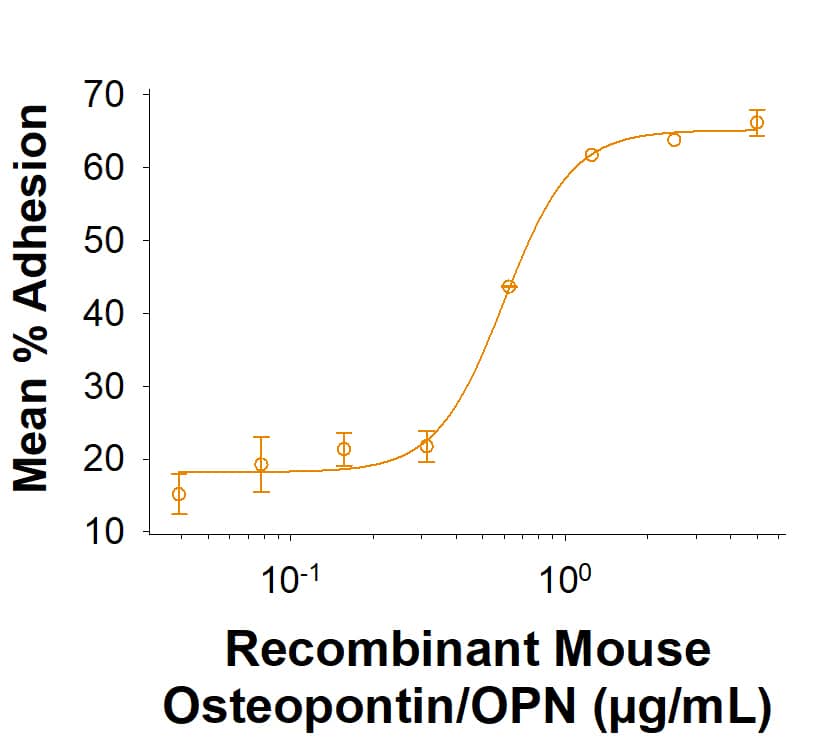Human ATBF1/ZFHX3 Antibody Summary
His3608-Leu3703
Accession # Q15911
Customers also Viewed
Applications
Please Note: Optimal dilutions should be determined by each laboratory for each application. General Protocols are available in the Technical Information section on our website.
Scientific Data
 View Larger
View Larger
ATBF1/ZFHX3 in MCF‑7 Human Cell Line. ATBF1/ZFHX3 was detected in immersion fixed MCF-7 human breast cancer cell line using Sheep Anti-Human ATBF1/ZFHX3 Antigen Affinity-purified Polyclonal Antibody (Catalog # AF7384) at 10 µg/mL for 3 hours at room temperature. Cells were stained using the NorthernLights™ 557-conjugated Anti-Sheep IgG Secondary Antibody (red, upper panel; Catalog # NL010) and counterstained with DAPI (blue, lower panel). Specific staining was localized to nuclei and cytoplasm. View our protocol for Fluorescent ICC Staining of Cells on Coverslips.
Preparation and Storage
- 12 months from date of receipt, -20 to -70 °C as supplied.
- 1 month, 2 to 8 °C under sterile conditions after reconstitution.
- 6 months, -20 to -70 °C under sterile conditions after reconstitution.
Background: ATBF1/ZFHX3
ATBF1 (Adenine-Thymine motif Binding Factor 1; also ZFHX3) is a 400 kDa highly modular protein that contains motifs found in multiple transcription factor families. It is expressed by a variety of cells, both normal and malignant, including postmitotic neurons, hepatocytes, mammary epithelium and gastric carcinoma cells. ATBF1 is both cytoplasmic and nuclear, and its localization has pronounced effects on the cell cycle. Cytoplasmic ATBF1 is associated with cell proliferation, while nuclear ATBF1 appears to promote cell differentiation. Human ATBF1-A is 3703 amino acids (aa) in length. It contains seventeen consecutive C2H2-type Zn finger domains interspersed with short poly-Glu and poly-Ala segments (aa 282-2006), followed by two homeobox domains (aa 2146-2301), two additional C2H2 Zn finger domains (aa 2328-2552) and two homeobox plus three intermixed Zn finger domains. There are at least six utilized Ser phosphorylation sites. Two isoform variants have been reported. The first is termed ATBF1-B. It has a predicted MW of 306 kDa and appears following the use of an alternative start site at Met915. When the 914 aa N‑terminus is present (as in ATBF1-A), ATBF1 shows transcriptional repression; when it is absent (as in ATBF1-B), ATBF1 acts as a transcriptional activator. The second isoform variant contains a 41 aa substitution for aa 1150-3703. Over aa 3608-3703, human ATBF1 shares 98% aa sequence identity with mouse ATBF1.
Product Datasheets
Citations for Human ATBF1/ZFHX3 Antibody
R&D Systems personnel manually curate a database that contains references using R&D Systems products. The data collected includes not only links to publications in PubMed, but also provides information about sample types, species, and experimental conditions.
3
Citations: Showing 1 - 3
Filter your results:
Filter by:
-
Brn3a controls the soma localization and axonal extension patterns of developing spinal dorsal horn neurons
Authors: Nishida, K;Matsumura, S;Uchida, H;Abe, M;Sakimura, K;Badea, TC;Kobayashi, T;
PloS one
Species: Mouse
Sample Types: Whole Tissue
Applications: IHC -
Graded Arrays of Spinal and Supraspinal V2a Interneuron Subtypes Underlie Forelimb and Hindlimb Motor Control.
Authors: Hayashi M, Hinckley CA, Driscoll SP, Moore NJ.
Neuron.
-
The histone demethylase Kdm6b regulates subtype diversification of mouse spinal motor neurons during development
Authors: W Wang, H Cho, JW Lee, SK Lee
Nature Communications, 2022-02-17;13(1):958.
FAQs
No product specific FAQs exist for this product, however you may
View all Antibody FAQsIsotype Controls
Reconstitution Buffers
Secondary Antibodies
Reviews for Human ATBF1/ZFHX3 Antibody
There are currently no reviews for this product. Be the first to review Human ATBF1/ZFHX3 Antibody and earn rewards!
Have you used Human ATBF1/ZFHX3 Antibody?
Submit a review and receive an Amazon gift card.
$25/€18/£15/$25CAN/¥75 Yuan/¥2500 Yen for a review with an image
$10/€7/£6/$10 CAD/¥70 Yuan/¥1110 Yen for a review without an image













